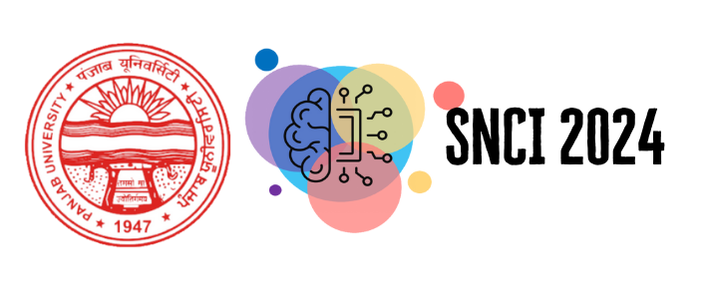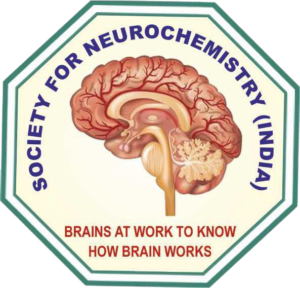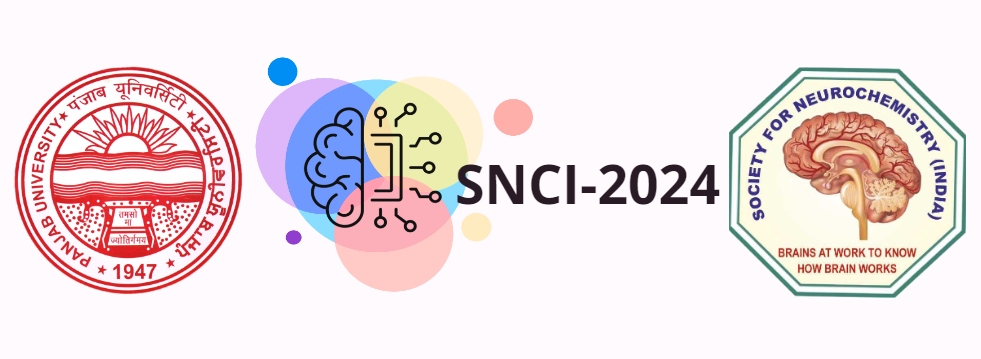Exploring the World of NSFW AI Anime Art Generation
Step into the world of NSFW AI anime, where artificial intelligence crafts unique and captivating adult-oriented artwork. This exciting technology empowers you to explore boundless creative possibilities and personalize your experience. Discover a new frontier of digital artistry tailored just for you.
Understanding the Technology Behind AI-Generated Art
AI-generated art might seem like magic, but it’s powered by complex algorithms called diffusion models. These models are trained on millions of images scraped from the internet, learning the intricate relationships between words and visual concepts. When you give a tool like Midjourney a prompt, it starts with random noise and gradually refines it, step-by-step, to match your description. It’s essentially making an educated guess based on all the art it has “seen.” This process of AI art generation is less about a computer painting and more about it reconstructing patterns, which is why mastering the perfect prompt is a new form of artistic skill.
How Generative Adversarial Networks Create Images
Understanding the technology behind AI-generated art begins with machine learning models trained on vast datasets of existing images. These models, such as Generative Adversarial Networks (GANs) or diffusion models, learn the underlying patterns and styles of the visual data. Users then provide a text prompt, which the AI interprets to synthesize a completely new image pixel by pixel. This process of generative AI art creation does not involve copying but rather reconstructing concepts from its learned knowledge. The key components are the training data’s breadth, the model’s architecture, and the precision of the textual description guiding the output.
The Role of Text Prompts in Guiding Artistic Output
AI-generated art isn’t magic; it’s powered by complex algorithms trained on massive datasets of existing images. These models, like Stable Diffusion and DALL-E, learn the intricate relationships between words and visual elements. When you provide a text prompt, the AI essentially performs a high-tech collage, assembling pixels based on its learned patterns to create a completely new image. This process of generative AI art creation relies on a neural network to statistically predict what your description should look like, blending concepts in ways a human might never conceive.
**Q: Does the AI actually “understand” my art prompt?**
**A:** Not in a human sense. It statistically associates the words in your prompt with visual data from its training, essentially making an educated guess to generate a relevant image.
Training Data: Sourcing and Ethical Considerations
Understanding AI-generated art requires grasping its foundation in machine learning models, particularly diffusion models and Generative Adversarial Networks (GANs). These systems are trained on vast datasets of existing images, learning complex patterns, styles, and compositions. Users then guide the output through text prompts, where the AI interprets the request and statistically assembles a new, unique image pixel by pixel. This process represents a significant shift in the future of digital creativity, raising questions about originality and the artist’s role while providing powerful new tools for visual expression.
Exploring the Creative Possibilities of AI Art
The artist no longer stares at a blank canvas but at a latent space, a vast digital wilderness where a simple phrase can conjure entire worlds. They become a curator of chaos, guiding the generative model through iterative whispers, shaping nebulous forms into breathtaking, unexpected visions. This collaboration challenges the very definition of authorship, pushing the boundaries of creative expression into thrilling, uncharted territories where human intention and algorithmic execution dance in a beautiful, symbiotic loop.
Crafting Detailed Prompts for Specific Styles
Exploring the creative possibilities of AI art reveals a new paradigm for human-machine collaboration. Artists are no longer limited to traditional tools; they can now act as creative directors, using generative AI models to translate complex prompts into stunning visuals. This process involves iterative refinement, where the artist guides the AI through nuanced language, blending styles and concepts that were previously impossible. The true potential lies not in replacing the artist, but in augmenting their imagination, opening unprecedented avenues for conceptual exploration and visual storytelling. This represents a fundamental shift in the future of digital art.
**Q: Is AI art truly creative?**
**A:** AI art demonstrates procedural creativity, but its output is guided by human intent. The creativity lies in the artist’s vision, prompt engineering, and curatorial choices, making it a collaborative tool.
Blending Genres and Aesthetics for Unique Characters
AI art generators are revolutionizing creative workflows, pushing the boundaries of human imagination. Artists can now input a simple text prompt and instantly generate a universe of visual concepts, from photorealistic portraits of mythical creatures to abstract expressions of emotion. This technology acts as a powerful co-creator, accelerating ideation and enabling the exploration of styles that would be incredibly time-consuming to produce manually. The future of digital art is being rewritten, not by replacing the artist, but by providing an unprecedented toolkit for visual experimentation.
It democratizes creation, allowing anyone with a vision to translate abstract ideas into stunning visuals.
The results are often surprising and inspirational, leading to entirely new artistic movements and challenging our very definitions of authorship and creativity.
Overcoming Creative Blocks with Algorithmic Inspiration
Exploring the creative possibilities of AI art reveals a dynamic new frontier for human expression. Artists are no longer just creators but become curators and collaborators, guiding algorithms to generate stunning, unexpected visuals. This synergy pushes the boundaries of imagination, producing everything from hyper-realistic dreamscapes to abstract data portraits. The process democratizes artistic creation, allowing anyone to translate complex prompts into tangible works. This innovation in digital artistry is fundamentally reshaping our understanding of the creative process itself.
Navigating the Ethical Landscape of Digital Creation
Navigating the ethical landscape of digital creation demands constant vigilance as technology outpaces regulation. Creators must grapple with profound questions surrounding data privacy, algorithmic bias, and the very ownership of AI-generated content. The line between inspiration and infringement blurs daily, challenging our traditional concepts of intellectual property.
Ultimately, the core challenge is ensuring that innovation serves humanity equitably, rather than exacerbating existing inequalities or creating new forms of digital harm.
This journey requires a proactive commitment to
ethical frameworks
and transparent practices, forging a future where
responsible innovation
is the non-negotiable foundation of all digital progress.
Addressing Copyright and Intellectual Property Concerns
Navigating the ethical landscape of digital creation demands a proactive approach to responsible AI development. Creators must move beyond mere technical capability and confront critical questions of data provenance, algorithmic bias, and the societal impact of their work. This involves implementing transparent data sourcing, rigorously testing for fairness, and establishing clear accountability frameworks. Ultimately, ethical foresight is not a constraint but a cornerstone of building sustainable and trustworthy digital innovations that serve humanity positively.
The Debate on Artist Imitation and Originality
Navigating the ethical landscape of digital creation demands a proactive approach to responsible AI development. Creators must confront challenges like data privacy, algorithmic bias, and the environmental toll of computation. Establishing clear ethical frameworks is not a constraint but a catalyst for sustainable innovation. By prioritizing transparency, consent, and fairness, we build trust and ensure technology serves humanity’s best interests, securing a future where digital progress aligns with our core values.
Establishing Boundaries for Responsible Generation
Navigating the ethical landscape of digital creation requires a careful balance between innovation and responsibility. Creators must grapple with complex issues like data privacy, algorithmic bias, and the environmental impact of their work. Ethical AI development is crucial, ensuring technology serves humanity fairly. Ultimately, it’s about building a digital world we can all be proud of. This involves making conscious choices about intellectual property, accessibility, and the societal consequences of our digital footprint.
A Guide to Popular Platforms and Tools
Navigating the landscape of popular platforms and tools is essential for both personal and professional productivity. For creative work, the Adobe Creative Cloud suite remains a dominant force, while Figma has revolutionized collaborative interface design. In communication, Slack and Microsoft Teams facilitate seamless team interaction. For project management, tools like Trello, Asana, and Jira offer varying levels of complexity to suit different workflows. Understanding these options is crucial for digital transformation and maintaining a competitive edge. The right selection empowers users to streamline operations and enhance collaboration effectively.
Comparing Web-Based Generators and Local Software
Navigating the digital ecosystem requires the right arsenal of tools for success. A guide to popular platforms and tools is essential for creators, developers, and marketers aiming to optimize their workflow and boost productivity. From collaborative powerhouses like Slack and Asana to creative suites from Adobe and development environments like GitHub, selecting the right software stack is a critical digital marketing strategy. Mastering these applications unlocks new levels of efficiency, collaboration, and innovation, transforming ambitious ideas into tangible results.
Features for Fine-Tuning and Customizing Output
Navigating the landscape of popular platforms and tools is essential for digital productivity. For project management, solutions like Asana and Trello facilitate task organization, while communication hubs such as Slack and Microsoft Teams keep remote teams connected. Creative professionals often leverage the Adobe Creative Cloud suite for design work, and developers rely on GitHub for version control. Choosing the right combination often depends on your team’s specific workflow and collaboration needs. This ecosystem of digital workspace solutions empowers businesses to streamline operations and enhance efficiency.
Community-Driven Models and Specialized Forums
Navigating the digital landscape requires selecting the right platforms and tools to achieve your goals. For content creators and marketers, mastering essential digital marketing tools is non-negotiable for success. Platforms like NSFW AI Chatbot Canva simplify graphic design, while Hootsuite streamlines social media management across multiple channels. For in-depth website analytics, Google Analytics provides invaluable user behavior data, and Mailchimp remains a powerhouse for email campaign automation. Integrating these solutions creates a powerful, efficient workflow that drives engagement and measurable growth.
**Q: How do I choose the right tool for my business?**
**A:** Start by clearly defining your primary objective—whether it’s increasing brand awareness, generating leads, or improving team collaboration—then select a tool specifically designed to address that core need.
Legal and Safety Considerations for Users
Imagine navigating a new digital town square; your first instinct is to understand its rules and ensure your own safety. For users, this translates to vital legal and safety considerations. Before you share a personal story, you must consider copyright laws and the permanence of your digital footprint. It is crucial to scrutinize a platform’s privacy policy to protect your data from misuse. Furthermore, recognizing and reporting online harassment is a key aspect of digital citizenship, ensuring the virtual community remains a secure space for all. Your awareness is the strongest shield in this interconnected world.
Understanding Platform-Specific Content Policies
Users must be aware of key legal and safety considerations when engaging online. This includes understanding a platform’s user data privacy policies to know how personal information is collected and used. It is crucial to comply with intellectual property laws by not sharing copyrighted material without permission. From a safety perspective, creating strong, unique passwords and enabling two-factor authentication are fundamental steps to protect accounts from unauthorized access. Vigilance against phishing attempts is essential for personal cybersecurity. Ultimately, being informed about these areas helps create a safer and more legally compliant digital experience for everyone.
Privacy and Data Security When Using Online Services
Users must understand the legal and safety considerations of any digital platform. This includes carefully reviewing Terms of Service and Privacy Policies to comprehend data collection and usage rights. Protecting personal information is a critical component of user safety, requiring strong, unique passwords and vigilance against phishing attempts. Adhering to community guidelines ensures a secure environment for all. Ultimately, a user’s digital safety is a shared responsibility between the individual and the platform. Proactive risk management is essential for navigating online spaces securely and protecting one’s digital identity.
International Regulations and Their Impact
Navigating the digital world requires a proactive approach to online privacy protection. Users must understand platform terms of service and data collection policies to safeguard their personal information. This vigilance extends to creating strong, unique passwords and enabling multi-factor authentication. Furthermore, recognizing and reporting scams, harassment, or illegal content is a critical safety measure.
Ultimately, your digital safety is a shared responsibility between you and the service providers you engage with.
Cultivating these habits ensures a more secure and empowering online experience for everyone.
The Future of Algorithmic Character Design
The artist stares at the blank digital canvas, no longer alone. Beside her, a generative AI breathes life into a thousand unique characters from a single whispered concept—a goblin with a heart of gold, a knight forged from starlight. This is the future of algorithmic character design, a collaborative dance between human creativity and machine intelligence. It will democratize creation, allowing small studios to generate vast, diverse casts with unprecedented speed. Procedural generation will craft not just appearances, but rich backstories and personalities, making every non-player character feel alive. The line between artist and tool is blurring into a partnership. This synergy will unlock entirely new worlds, pushing the boundaries of interactive storytelling and establishing a new paradigm for dynamic narrative design where no two player experiences are ever the same.
Emerging Trends in Animation and Interactive Media
The future of algorithmic character design is a canvas for infinite stories. Imagine a world where a writer’s description of a “wizened sea captain with a storm in his eyes” is instantly rendered into a unique, fully-realized digital persona. These AI-driven systems will craft characters with procedural backstories and dynamic personalities, ensuring no two heroes or villains are ever alike. This evolution will fundamentally reshape interactive storytelling, creating deeply personal and unpredictable narratives for every player. The key to unlocking this potential lies in advanced procedural content generation, pushing the boundaries of creativity beyond human limitations.
Potential for Personalized and Dynamic Content
The future of algorithmic character design will leverage generative AI and procedural systems to create vast, unique populations for games and virtual worlds. This shift will empower creators with tools for rapid iteration, moving beyond manual modeling to guided generation. This evolution is central to the future of generative AI in entertainment, enabling dynamic NPCs with bespoke appearances and backstories. The focus will shift from pure creation to curation, as artists direct algorithms to produce coherent and diverse characters at an unprecedented scale.
Evolving Community Standards and Moderation Techniques
The future of algorithmic character design is one of dynamic co-creation, where artists set high-level parameters and AI handles the intricate execution. This synergy will unlock unprecedented personalization in video games, allowing for characters that adapt their appearance and narrative based on player decisions. The key for studios will be to leverage procedural content generation not as a replacement for vision, but as a tool to expand creative possibility and build richer, more reactive worlds. Mastering this human-AI collaboration will be essential for next-generation storytelling.



